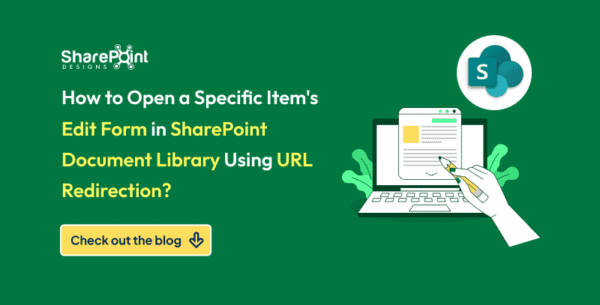Cloud computing is the delivery of computing services, including servers, storage, databases, networking, software, analytics, and intelligence, over the internet (“the cloud”). Cloud platforms offer on-demand access to a shared pool of configurable computing resources that can be rapidly provisioned and released with minimal management effort or service provider interaction. Using cloud platforms has several advantages, such as scalability, affordability, flexibility, dependability, and accessibility. Businesses can easily roll out new apps, pay for only the resources they use, scale resources up or down as needed, and access services from any location with an internet connection.
The major players in the cloud computing market are Amazon Web Services (AWS), Google Cloud Platform (GCP), and Microsoft Azure. AWS, launched in 2006, is the market leader and offers a comprehensive suite of cloud services. GCP, introduced in 2008, is known for its advanced data analytics and machine learning capabilities. Azure, released in 2010, is Microsoft’s cloud platform and integrates well with its other products and services.
History
The cloud computing landscape is dominated by three major players: Amazon Web Services (AWS), Google Cloud Platform (GCP), and Microsoft Azure. Each platform boasts a rich history that has shaped its approach and offerings. Let’s delve into their fascinating pasts.
AWS: The Pioneering Trailblazer
Not always was AWS the all-pervasive cloud powerhouse that it is. It all started in the early 2000s when Amazon made the decision to use its knowledge to develop a ground-breaking solution in response to constraints with its own internal infrastructure. They introduced AWS, the first all-inclusive suite of cloud services globally, in 2006. This changed everything. Enterprises were no longer restricted to costly, immobile infrastructure. The pay-as-you-go concept, which is now widely used, was launched by AWS and allows users to scale resources up or down as needed, greatly increasing flexibility and cost efficiency. A new era in IT was ushered in by innovative services like Simple Storage Service (S3) for object storage and Elastic Compute Cloud (EC2) for virtual machines, which later became industry standards. AWS has remained the industry leader by consistently innovating and growing, providing the widest range of cloud services to meet a variety of needs.
GCP: The Data-Driven Powerhouse with Humble Beginnings
In the fight for cloud computing, Google — a name associated with innovation — wasn’t far behind. AWS concentrated on providing wide infrastructure services, but Google adopted a different strategy. With the introduction of App Engine in 2008, a platform meant to facilitate the development and deployment of online apps for developers, their journey into the cloud officially began. The emphasis on Platform as a Service (PaaS) appealed to developers who were looking for a more efficient development process. When GCP first started for business in 2010, it provided more services than only PaaS. GCP carved out a distinct niche by utilizing Google’s fundamental competencies in data analysis, AI/ML, and machine learning. These days, data-driven companies looking for strong tools to extract insights from their data love GCP.
Azure: The Enterprise Champion with Windows Roots
Even Microsoft, one of the biggest names in business software, was forced to acknowledge the cloud revolution. The codename for what would eventually become Microsoft Azure, Project Red Dog, was revealed in 2008. The official moniker at launch, Windows Azure, hit the market by 2010. From the start, Azure’s main advantage has been its smooth interaction with Microsoft products, such as Windows Server and Office 365. For companies who had already made significant investments in the Microsoft environment, this made it a desirable alternative. Azure developed over time to become more than just an integration platform, providing a full cloud solution with an array of services including development tools, analytics, and infrastructure. Azure is a great option for geographically separated enterprises due to its extensive worldwide reach and vast network of data centers. Azure is still a significant competitor today, often coming up with new ideas to rival AWS and GCP.
Comparing the Cloud Platforms
The three major cloud platforms — AWS, GCP, and Azure — offer a wide range of services and features. While they share some similarities, there are notable differences in their offerings, pricing models, and market share.
Services
While compute, storage, networking, databases, and security are foundational features offered by all three cloud giants (AWS, GCP, and Azure), their specializations cater to distinct needs. For compute-intensive workloads, AWS offers the most diverse virtual machine options. GCP excels in containerized applications, big data storage, and boasts leadership in AI/ML with its Tensor-Flow framework and Vertex AI suite. Azure seamlessly integrates on-premises Windows environments and boasts superior hybrid cloud networking. In the database realm, AWS offers the widest variety, GCP’s Cloud Spanner provides global consistency, and Azure integrates tightly with Microsoft SQL Server. Security remains a priority for all, with AWS providing granular access control, GCP leveraging its security expertise, and Azure offering a unified experience through integration with Microsoft security
Pricing and Cost
When choosing a cloud platform in India, cost is a major consideration alongside features. Here’s a breakdown of how AWS, GCP, and Azure handle pricing in India, with sample prices in Indian Rupees (INR) to provide a general understanding (remember, prices can fluctuate).All the prices are mentioned on their respective cloud websites
AWS: Leverages a pay-as-you-go model, ideal for unpredictable workloads. Basic compute instances (t2.micro) in the Asia Pacific (Mumbai) region start around ₹0.065 per hour. They offer various options for cost optimization: Reserved Instances provide upfront commitments for discounted rates on specific resources for a fixed term, with savings up to 75% compared to on-demand pricing. Spot Instances allow you to utilize unused compute capacity at significantly lower costs (up to 90% discount) but come with the risk of interruption. Prices can be as low as ₹0.003 per hour, but fluctuate based on availability. Savings Plans offer discounted compute costs based on historical usage patterns, with savings reaching up to 72% compared to on-demand pricing. It provides students with free access to $100 worth of AWS service credits for a limited period (typically 12 months). They also offer a wide range of resources like courses, labs, and challenges to help students develop their cloud skills.
GCP: Similar to AWS, GCP follows a pay-as-you-go model, billing you based on your actual resource consumption in INR. They offer Committed Use Discounts to achieve significant savings (up to 30–50%) by committing to a specific resource level for a set period (one or three years). For example, committing to a sustained use of a n1-standard-1 machine in the Asia Pacific (Mumbai) region can be around ₹2,520 per month compared to the on-demand price of ₹9,345 per month. Sustained Use Discounts automatically apply based on your usage over a month, offering discounts up to 30% without any upfront commitment. Additionally, GCP’s regional pricing structure often offers cost savings in the Asia Pacific (Mumbai) region compared to other regions. While GCP Skills Boost doesn’t offer direct monetary credit, it grants students free access to hands-on labs, skill badges, and online courses related to GCP services. Some universities and institutions may partner with GCP to offer students additional free credits through their programs.
Azure: Provides a combination of pay-as-you-go and committed use models. Pay-as-you-go pricing starts around ₹0.084 per hour for a basic B1s virtual machine in the India West region. Reserved Instances allow you to purchase resources upfront for a discounted rate over a set term, with savings up to 72% compared to pay-as-you-go pricing. For organizations already invested in Microsoft products, Azure’s Hybrid Benefit program unlocks substantial discounts by leveraging existing on-premises Windows Server or SQL Server licenses. You can save up to 80% on Windows Server virtual machines and 55% on SQL Server virtual machines. Finally, Enterprise Agreements allow large organizations with consistent cloud resource needs to negotiate volume discounts with Microsoft for predictable, ongoing cloud usage. Provides students with free access to $100 worth of Azure service credits for a limited period (typically 12 months). Similar to AWS Educate, Azure offers students learning resources like tutorials, documentation, and sandboxes to experiment with their services.
Market share
AWS (Amazon Web Services): As the clear leader, AWS has a huge and devoted customer base spanning all sizes and sectors. Organizations of various sizes, from startups to major corporations, swarm to AWS because of its broad range of services, dependability, and well-known brand.
Microsoft Azure: Azure, with its second-largest market share, is especially well-liked among businesses who have already made investments in the Microsoft ecosystem. Its smooth interaction with Microsoft services and products, including as SQL Server and Windows Server, makes it an ideal choice for a lot of businesses looking for a unified cloud solution.
Google Cloud Platform (GCP): Due to its advantages in data analytics, artificial intelligence, and machine learning (AI/ML), GCP is quickly gaining popularity, while not having the same overall market share as AWS or Azure. An rising number of organizations are using GCP’s array of potent tools and services, including as TensorFlow and Vertex AI, when they need advanced capabilities in these areas.
Global Presence
AWS: In terms of global reach, AWS is unmatched. It has the most extensive global infrastructure footprint, with availability zones and data centers thoughtfully dispersed among several geographical areas. This vast network makes it a great option for businesses with worldwide operations or a focus on eliminating user experience lag because it guarantees high availability and low latency for geographically dispersed applications.
Microsoft Azure: Offering a robust global presence that closely follows AWS, Azure’s extensive network of data centers provides global reach for its services. This global reach caters to the needs of multinational corporations and organizations with geographically dispersed users.
Google Cloud Platform (GCP): Like AWS and Azure, GCP is also present throughout the world, but with fewer regions and availability zones. Nonetheless, GCP places its data centers in strategic locations to serve particular areas and provides affordable prices in some of them. For businesses searching for affordable cloud solutions in particular regions, this might be a deciding factor.
Security
Organizations handling sensitive data and workloads in the cloud must take cloud security and compliance seriously. To protect the data and apps of their clients, the three main cloud providers — AWS, GCP, and Azure — have established strong security protocols and compliance certifications.
AWS: Data encryption, network security, identity and access management, and threat detection and mitigation are just a few of the many security services and capabilities that AWS provides. In order to comply with regulatory standards across industries, AWS also offers a variety of compliance certifications and accreditations, including PCI-DSS, HIPAA, SOC, ISO, and FedRAMP.
Azure: Azure Security Center, which offers enhanced threat protection and unified security management, is one of Azure’s security products. Additionally, Azure provides a range of compliance certifications, including FedRAMP, HIPAA, PCI-DSS, and ISO. Azure also offers cloud-native SIEM (Security Information and Event Management) solutions like Azure Sentinel, which are advanced security features.
GCP: Secure boot, binary authorization, and encryption both in transit and at rest are some of GCP’s security features. Additionally, GCP provides a range of compliance certifications, such as FedRAMP, HIPAA, PCI-DSS, and ISO. Furthermore, GCP includes cutting-edge security capabilities like Cloud Security Command Center, which enables threat detection, vulnerability scanning, and real-time asset inventory.
Applications
AWS is widely used for a variety of applications, including web hosting, big data analytics, machine learning, and Internet of Things (IoT) solutions. AWS offers a comprehensive set of services and tools, making it a popular choice for businesses of all sizes.
Web hosting is one of the most common use cases for AWS, with services like Amazon Elastic Compute Cloud (EC2) and Amazon Lightsail providing scalable and secure hosting solutions. AWS also excels in big data analytics with services like Amazon Athena, Amazon EMR, and Amazon Redshift, enabling organizations to process and analyze vast amounts of data efficiently.
Additionally, AWS provides powerful machine learning services like Amazon SageMaker, Amazon Rekognition, and Amazon Comprehend, allowing developers to build and deploy sophisticated machine learning models. For IoT applications, AWS IoT Core and AWS Greengrass offer a secure and scalable platform for managing and processing data from connected devices.
GCP is particularly strong at containerized apps, AI, and data analytics. While Cloud Machine Learning Engine and AI Platform enable the development and deployment of machine learning models, BigQuery and Dataflow services handle large data. By providing pre-built AI services for applications like image identification, Vertex AI streamlines the machine learning lifecycle.
Integration with TensorFlow, a popular open-source framework for complex machine learning models, further strengthens GCP’s AI capabilities. AutoML automates various aspects of ML development, making it accessible even with limited expertise. AI Platform Notebooks provide a familiar Jupyter notebook environment for collaboration on AI projects.
Beyond only providing tools, GCP uses Google AI research to enhance its AI services on a constant basis, guaranteeing that companies can take advantage of the most recent developments in the industry. Because of its emphasis on intuitive tools and state-of-the-art research, GCP is a compelling option for businesses wishing to employ AI to create game-changing business solutions.
Azure is a flexible cloud platform that supports several use cases, such as IoT, web hosting, data analytics, and machine learning. While Azure Data Lake and Azure Synapse Analytics are potent tools for big data analytics, Azure’s App Service and Virtual Machines offer scalable and secure web hosting alternatives.
With the powerful machine learning capabilities provided by Azure Machine Learning and Cognitive Services, developers can create and implement intelligent apps. Azure IoT Hub and Azure IoT Central offer a scalable and secure platform for managing and processing data from connected devices in IoT systems.
Because they provide a wide range of services and tools, all three cloud platforms can be used for different types of use cases and applications. In the end, the decision is made based on the particular project requirements, the infrastructure that is already in place, and the knowledge and preferences of the company.

Future Trends
The field of cloud computing is changing quickly thanks to new ideas and cutting-edge methods. Cloud platforms are adjusting to suit the increasing demands of organizations for cost-effectiveness, scalability, and agility.
One significant trend is the rise of serverless computing, which allows developers to run code without provisioning or managing servers. AWS Lambda, Google Cloud Functions, and Azure Functions are leading the way in this area, enabling developers to focus on writing code while the cloud provider handles the underlying infrastructure.
Artificial Intelligence (AI) and Machine Learning (ML) are also playing a crucial role in cloud computing. Cloud platforms are offering AI/ML services that simplify the development, deployment, and scaling of AI models. For example, AWS SageMaker, Google Cloud AI, and Azure Machine Learning empower businesses to leverage AI/ML capabilities without the need for extensive expertise or infrastructure.
Edge computing is another emerging trend, where data processing and analysis occur closer to the source, reducing latency and improving efficiency. This is particularly important for Internet of Things (IoT) applications and real-time data processing scenarios. Cloud providers are expanding their edge computing offerings, such as AWS Outposts, Google Cloud Edge, and Azure Edge Zones.
Quantum computing, while still in its early stages, is being explored by cloud providers as a potential game-changer. AWS, Google Cloud, and Azure are investing in quantum computing research and developing quantum computing services to enable breakthroughs in areas like cryptography, simulation, and optimization.
In the cloud computing sector, sustainability is likewise becoming more and more important. To assist companies in lessening their environmental effect, cloud providers are putting green policies into practice and providing carbon-neutral or carbon-negative services. For instance, AWS has promised to use only renewable energy sources by the year 2025, and Azure and Google Cloud also have sustainability targets that are comparable.
As the cloud computing landscape continues to evolve, the major platforms are embracing these trends and innovations to stay competitive and meet the ever-changing needs of businesses. By leveraging cutting-edge technologies and adopting sustainable practices, cloud providers are shaping the future of computing and enabling organizations to unlock new possibilities.
Success Story
Cloud migration success stories abound. Netflix, initially burdened by a traditional data center, leveraged AWS services like EC2, S3, and CloudFront to seamlessly scale its infrastructure and deliver high-quality streaming to a global audience. Similarly, Airbnb built its entire data infrastructure on AWS, using services like EMR, Redshift, and Kinesis to process massive amounts of user data. This data-driven approach empowered Airbnb to personalize services, optimize pricing, and ultimately, improve the user experience for its global vacation rental marketplace.
Cloud migration benefits a range of businesses in addition to massive entertainment companies like Netflix. Spotify manages its vast music streaming data using GCP’s Compute Engine, Cloud Dataflow, and BigQuery, which allows for scalability, reliability, and performance improvements at a lower cost of operation. Similar to this, Snapchat depends on GCP’s scalable resources and low-latency infrastructure to guarantee smooth real-time multimedia sharing and messaging for its vast user base. These illustrations show how adaptable cloud platforms are in meeting the requirements of companies in a variety of sectors.
Cloud migration gives firms more capability, from the millions of gamers on Minecraft to Boeing’s intricate aerospace simulations. For smooth gameplay, Minecraft makes use of Azure’s global reach and scalability, while Boeing uses its high-performance computing and AI for design optimization. This demonstrates how adaptable the cloud is in meeting needs unique to different industries.
Conclusion:
In the competitive world of cloud computing, AWS, GCP, and Azure reign supreme. Each platform offers a powerful set of services, but they cater to different needs. AWS boasts a vast service library, global reach, and strong track record, ideal for large enterprises. GCP excels in data analytics, machine learning, and cost-efficiency, making it a great fit for data-driven businesses. Azure integrates seamlessly with Microsoft products, offers hybrid cloud options, and prioritizes security, perfect for companies already invested in the Microsoft ecosystem.
Choosing the right cloud platform requires careful consideration. Organizations should assess their specific needs, technical requirements, and long-term goals. A multi-cloud or hybrid approach can leverage the strengths of multiple platforms while mitigating risks. By thoroughly evaluating each option, businesses can make an informed decision and thrive in the ever-changing cloud landscape.
This blog is part of Microsoft Azure Week! Find more similar blogs on our Microsoft Azure Landing page here.
About the author:

AI Data science’DJSCE 26| Open source contributor @SSOC’24 | DJS Infomatrix
Parekh, D. (2024) Cloud Wars: AWC vs. GCP vs. Azure -Which platform reigns supreme? Available at: Cloud Wars: AWC vs. GCP vs. Azure -Which platform reigns supreme? | by Dev Parekh | Jun, 2024 | Medium [Accessed on 24/06/2024]










